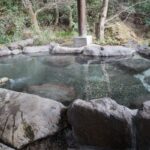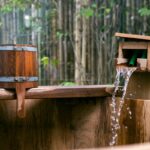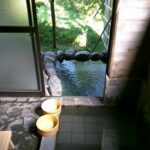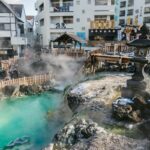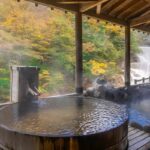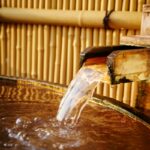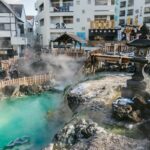There are around 25,000 hot spring sources to discover throughout Japan. Of those hot spring sources, 3,000 of them are considered genuine onsen establishments that provide heated mineral water.
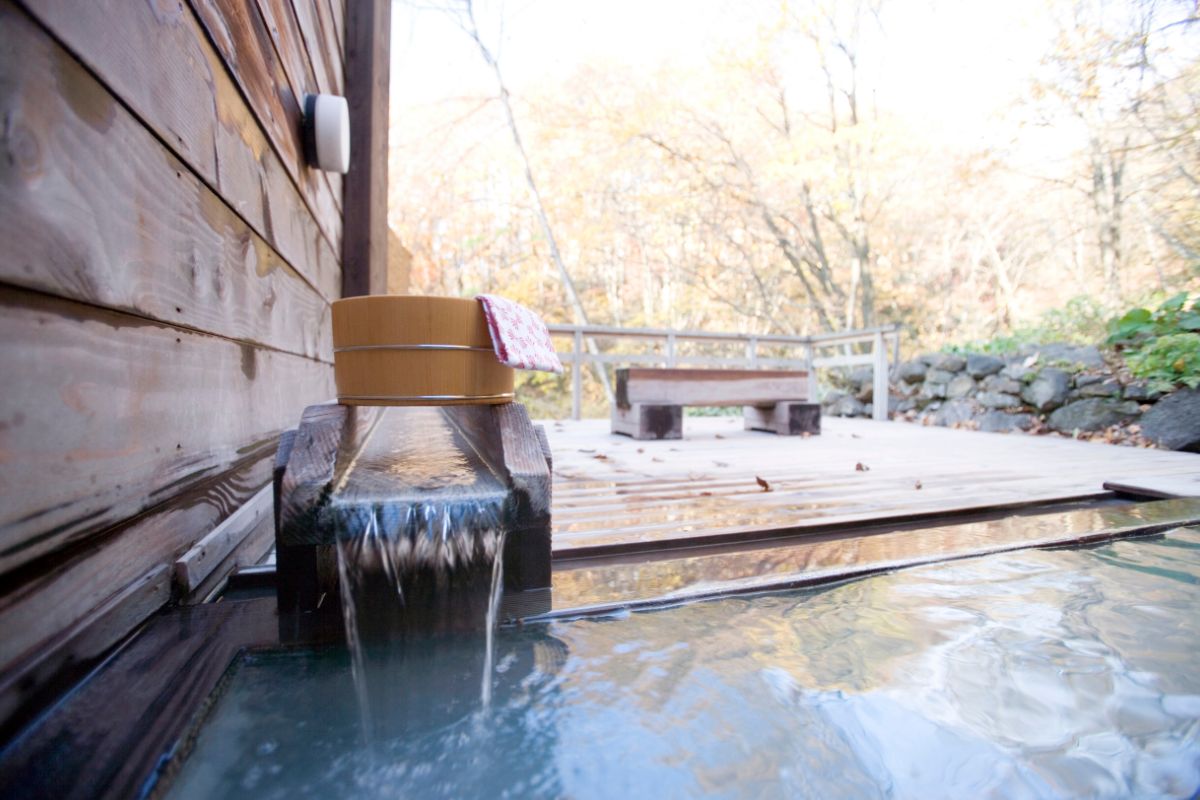
These can be indoor baths, known as uchiyu, or outdoor ones which can be called either roten-buro or noten-buro. Choraku includes private open-air baths in Arima Onsen that famously contains both gold and silver types of spring water.
In this guide, we will detail the famous gold and silver spring water of Choraku in Arima Onsen and why you should seek it out.
Why You Should Seek Out An Onsen?
There are few more relaxing activities than a long soak in heated mineral-rich water. However, in Japan, spending time in an onsen has declined due to many households having their own bath.
That’s not the case for many tourists who are seeking out an authentic Japanese experience. Other such experiences can include staying at a ryokan, watching a sumo match, and joining a tea ceremony.
Thankfully, bathing in an onsen remains high on a list of authentic and cultural experiences in Japan. To that extent, there remains a vast number of sightseeing towns that are well-known for their hot springs.
Some of the most notable onsens include Togura Kamiyamada Onsen, Kinosaki Onsen, and Choraku in Arima Onsen.
The Appeal Of Choraku Onsen
Aside from the famous gold and silver spring water (more about that later), there are other reasons to make a visit to Choraku in Arima Onsen.
The facilities at Choraku Ryokan are simply sublime as the traditional Japanese inn is surrounded by trees on top of a hill. The air is purified and that’s even before you step into the ryokan itself.
The decorating is elegant, the facilities are spacious, and the service is blissfully efficient. The private baths are split between males and females yet there are further options available.
There are both indoor public baths and open-air baths (roten-buro) which are mixed with different capacities for both types. The capacity can range from 10 persons to as many as 70 so you can choose how personal and private a bathing experience you prefer.
You could even book a roten-buro on an exclusive basis and enjoy the forest’s glorious greenery all to yourself though you can choose who joins you. That could mean bathing on your own, with chosen guests, or just your family members.
Whichever arrangement you decide on, the privacy of the roten-buro is vastly rewarding. Remember that there are certain times of the year when you can really enjoy the colors of the surrounding trees.
That includes the red and browns of fall and the cherry blossoms during Spring which prove to be visually rewarding on their own merits. While you should enjoy soaking in the mineral-rich water, the visual sight is something to behold.
Further luxury is available from three on-site villas. Each one includes a decadent room and exclusive kinsen and ginsen roten-buro baths.
If you are planning a honeymoon or wish to spend some quality time relaxing with your loved ones then this is an excellent option. Occasionally in summer, you may also find a large swimming pool filled with onsen water for a cooler soak.
There are also spa baths that provide improved circulation for the radon that is present in the spring water. If you prefer to be fully immersed then try a standing bath. Then again, a steam room may be ideal for fully enjoying the healing vapors of the onsen’s spring water.
The Gold And Silver Spring Water
There are several reasons to visit Choraku in Arima Onsen on its own yet the biggest draw is its famous gold and silver spring water. The water for Choraku comes from different spring sources yet is divided into those two main types.
The gold hot spring is relatively dark and muddy when exposed to the air and is called Kin-no-Yu. The clear, transparent spring is known as the silver hot spring which is believed to be beneficial for an individual’s skin and called Gin-no-Yu.
The Gold Hot Spring
The fascination between Kin-no-Yu relates to its health benefits. Specifically, the golden spring and the water is said to be beneficial for treating stomach flu.
Though the color may appear to be cloudy and yellowish brown or a dark orange, that is largely a result of its mineral-rich content. That includes plenty of iron, sodium chloride, and saline which comes at a naturally high temperature from the spring well itself.
The Silver Hot Spring
The water used in a Gin-no-Yu is more of a straightforward thermal spring but that does come with its own benefits too. The very first bathers named the Gin-no-Yu as a silver hot spring due to the deposited white minerals.
As the white minerals swayed in the water, it appeared to look like silver that was shining in the water.
How To Get To Choraku Onsen?
Choraku can be found in Arima Onsen which is around an hour away by bus. You can catch the bus from Hankyu Highway Bus Osaka Umeda Terminal, also known as Hankyu Sambangai.
This bus goes to Arima Onsen and includes Kobe and Akashi Kaikyo Ohashi Bridge as nearby tourist spots. The closest airport is Osaka International Airport and the onsen is a mere 17.6km away.
If you were to fly into Kobe Airport then the onsen is only 18.5km away too. By train, you can simply head to Arima Onsen Station and then take a 1.3km walk.
Final Thoughts
For an unforgettable, authentic Japanese experience, you should add bathing in an onsen to your list of things to do. The heated spring water is undoubtedly relaxing and the pastime has been known for its health benefits.
If you are heading to either Osaka or Kobe then Arima Onsen is only a short distance away. With its famous gold and silver springs, Choraku is well worth a visit.
Frequently Asked Questions
How Is Onsen Water Defined?
In Japan, onsen is known as the hot springs that occur naturally throughout the country. These are pools of hot, typically steaming, water that bubbles as it makes its way out of the ground.
As the water makes its way through the earth, it is naturally heated and contains a wide range of defined natural minerals. To meet the definition of onsen water, that water has to be heated to at least 25°C when it surfaces.
Why Is Onsen Water Good For An Individual’s Skin?
Aside from the natural mineral content of onsen water, the range of ingredients help to remove layers of old, cornified skin. This is ideal for skin rejuvenation which is perhaps why those who have bathed in an onsen for most of their life have such great skin.
The water vapor also provides a moisturizing effect. Instead of suffering from dry, flaky skin, by bathing in an onsen you can enjoy firm yet moist skin.
- 16 Best Websites To Watch Japanese Movies With English Subtitles - May 11, 2023
- Is ZIPAIR The Best Airline For Traveling To Japan? - May 11, 2023
- Ryu Murakami Vs Haruki Murakami – Which One Should You Read? - May 11, 2023

